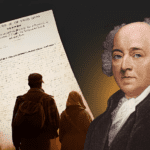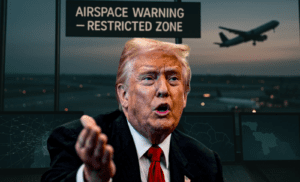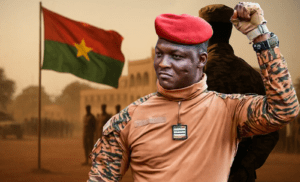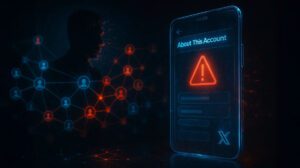On March 25, 2025, President Donald Trump signed a comprehensive executive order aimed at overhauling the United States’ federal election processes. This directive introduces several significant changes, notably requiring documentary proof of citizenship for voter registration and mandating that all ballots be received by Election Day.
The order asserts that the U.S. has failed “to enforce basic and necessary election protections” and calls on states to collaborate with federal agencies to share voter lists and prosecute election crimes. It also threatens to withdraw federal funding from states that do not comply with these mandates.
Key Provisions of the Executive Order
1. Proof of Citizenship for Voter Registration: The order mandates that individuals must provide documentary proof of U.S. citizenship, such as a passport or birth certificate, to register for federal elections. This measure aligns with the objectives of the proposed Safeguard American Voter Eligibility (SAVE) Act, which has faced delays in Congress. While voting by non-citizens in federal elections is already illegal and can result in felony charges and deportation, proponents argue that this requirement will enhance election integrity. However, critics contend that it could disenfranchise eligible voters who lack immediate access to such documents.
2. Deadline for Ballot Reception: The directive requires that all mail-in or absentee ballots be received by Election Day to be counted. Currently, 18 states and Puerto Rico accept ballots received after Election Day, provided they are postmarked on or before that date. This change aims to standardize ballot reception timelines but may face resistance from states with existing extended deadlines.
3. Voting System Guidelines: The executive order instructs the Election Assistance Commission to amend voting system guidelines to exclude the use of barcodes or QR codes in the vote-counting process. This could impact states like Georgia, where in-person voters use machines that produce paper ballots with QR codes to record selections. The directive emphasizes the need for transparent and verifiable voting methods.
4. Foreign Contributions: The order prohibits foreign nationals from making donations in certain elections, addressing concerns about foreign influence in U.S. electoral processes. This measure seeks to prevent indirect contributions through nonprofit organizations that support political causes.
5. Data Sharing and Law Enforcement: Federal agencies, including the Department of Homeland Security and the Social Security Administration, are directed to share data with states to help identify non-citizens on voter rolls. Additionally, the order emphasizes that states should cooperate with federal law enforcement in prosecuting election crimes, with non-compliance potentially resulting in the loss of federal grants.
The executive order is expected to face significant legal challenges, as the Constitution grants states the authority to determine the “times, places, and manner” of elections. While Congress has the power to regulate voting to some extent, the president’s authority to enforce such sweeping changes through an executive order is debatable. Critics argue that the order oversteps executive powers and infringes upon states’ rights. Democratic officials have voiced strong opposition.
Jena Griswold, Colorado’s Democratic secretary of state, labeled the order as an “unlawful” weaponization of the federal government, asserting that it aims to make voting more difficult for citizens.
Representative Joe Morelle of New York described the directive as “misguided,” “immoral,” and “illegal.” Legal experts anticipate that the courts will ultimately determine the validity of the order.
Potential Impact on Voters
Voting rights organizations have expressed concerns that the proof of citizenship requirement could disenfranchise millions of eligible voters. A 2023 report by the Brennan Center for Justice estimated that approximately 9% of U.S. citizens of voting age, or about 21.3 million people, do not have proof of citizenship readily available. Obtaining such documentation can be challenging, particularly for low-income individuals, the elderly, and those born outside of hospital settings. Recent town elections in New Hampshire have highlighted practical challenges associated with similar state-level laws. Voters were turned away for lacking required documents or due to discrepancies between their birth certificates and current IDs, notably affecting married women who have changed their names. These incidents underscore the potential for eligible voters to be disenfranchised under stringent documentation requirements.
This executive order aligns with President Trump’s longstanding assertions regarding election integrity and his unsubstantiated claims of widespread voter fraud. Following his loss in the 2020 election, Trump has repeatedly alleged, without evidence, that the election was rigged against him. This directive appears to be a continuation of efforts to implement stricter voting regulations.
The Republican National Committee (RNC) has concurrently initiated efforts to scrutinize voter registration lists across the country. The RNC has requested public records from election officials in 48 states and the District of Columbia to assess how states are maintaining voter rolls by removing ineligible voters, such as deceased individuals and non-citizens. This action reflects a broader strategy to question election integrity and aligns with the objectives of the executive order.
Supporters of the executive order argue that these measures are necessary to restore public confidence in elections and ensure that only eligible citizens participate in the voting process. They contend that standardized requirements across states will enhance the integrity and security of federal elections. However, opponents view the order as a politically motivated attempt to suppress voter turnout, particularly among marginalized communities. Democratic lawmakers, civil rights organizations, and voting rights advocates argue that the changes disproportionately impact minority voters, the elderly, and low-income individuals who may struggle to obtain the necessary documentation in time for elections.
Legal Challenges and State Responses
Many states with Democratic leadership are expected to challenge the executive order in court. Legal experts suggest that the order may face constitutional hurdles, as federal law generally does not dictate the specific requirements for voter registration at the state level. The National Association of Secretaries of State, which includes both Republican and Democratic officials, has indicated that election administration is a state matter, and any federal overreach could lead to prolonged litigation. Jena Griswold, Colorado’s Secretary of State, has already pledged to resist implementing the order, calling it “a blatant attempt to restrict voting rights.”
Other state officials have echoed similar sentiments, warning that the new regulations could cause confusion among voters and election administrators.
On the other hand, Republican-led states have expressed support for the measure. Texas, Georgia, and Florida officials have stated that the order aligns with existing state laws that already require some form of voter ID or proof of citizenship. Florida Governor Ron DeSantis praised the order, calling it a “necessary step to protect the sanctity of our elections.”
Implications for the 2026 Midterms and 2028 Presidential Election
If the executive order withstands legal challenges, it could significantly impact upcoming elections. The 2026 midterm elections and the 2028 presidential race would be the first major tests of the new voting regulations. Analysts predict that the proof of citizenship requirement alone could lead to lower voter registration rates, especially among younger voters and naturalized citizens who may not have immediate access to their documentation. Furthermore, the new deadline for mail-in ballots could lead to significant changes in how elections are conducted. States that previously accepted late-arriving ballots postmarked by Election Day would need to adjust their systems, potentially leading to longer lines at polling places and increased reliance on early voting.
In response to the order, protests have erupted in several major cities, including Washington, D.C., New York, and Los Angeles. Voting rights organizations like the American Civil Liberties Union (ACLU) and the Brennan Center for Justice have vowed to challenge the directive in court. Meanwhile, grassroots movements are mobilizing efforts to educate voters about how to comply with the new rules and ensure they are not disenfranchised. On social media, hashtags such as #ProtectOurVote and #VoterSuppression have been trending, with many users criticizing the order as an attempt to undermine democracy. Former President Joe Biden issued a statement calling the executive order “an attack on the fundamental right to vote” and urged Congress to pass new voting rights legislation to counteract it.
President Trump’s executive order represents one of the most significant federal interventions in election laws in recent history. While proponents argue that it will strengthen election security and restore public confidence in the voting process, critics warn that it could lead to widespread voter suppression and legal battles. As legal challenges unfold and states determine how to respond, the future of U.S. election laws remains uncertain. The order is likely to remain a contentious issue leading up to the 2026 midterms and the 2028 presidential election, shaping the national debate on voting rights and election integrity for years to come.
















